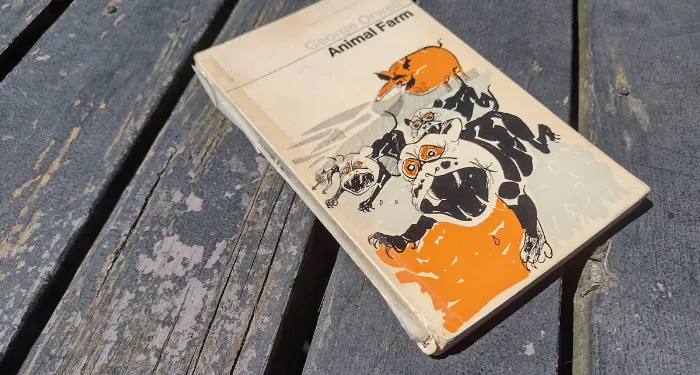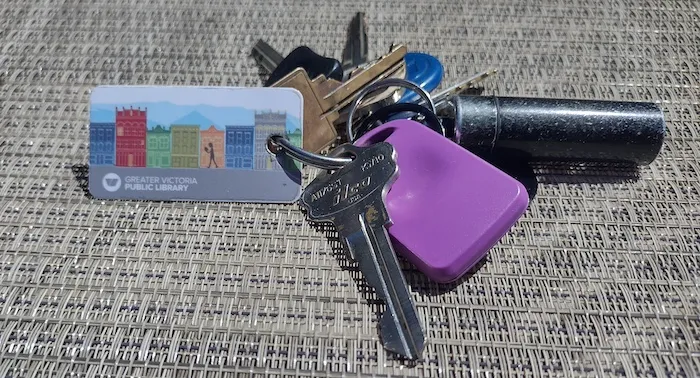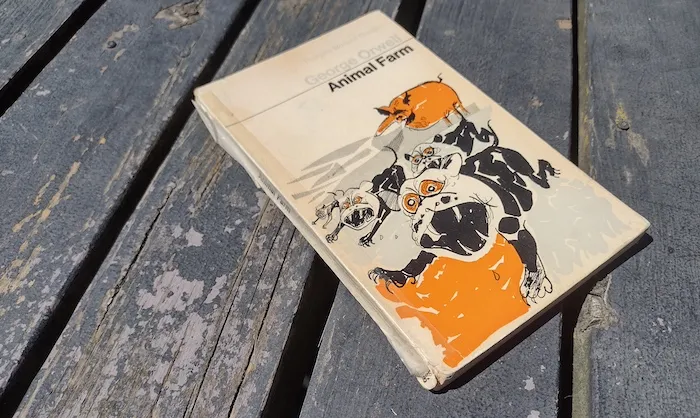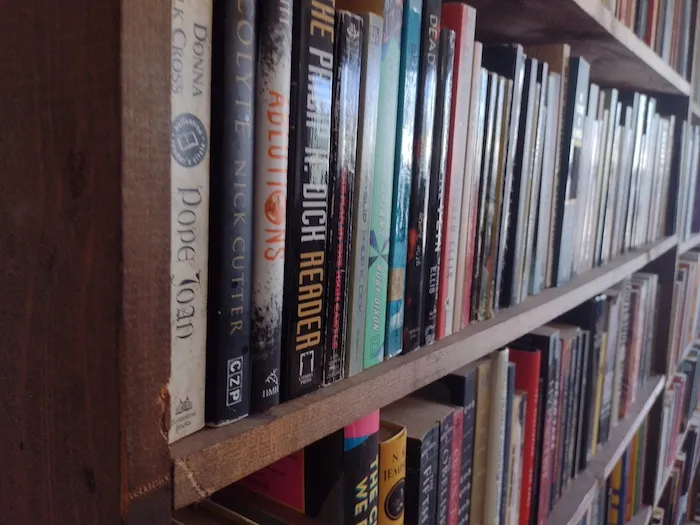
Underconsumption Core for Readers
“Underconsumption” is trending, and according to comment sections, it’s just living like a normal human being. Underconsumption, which prioritizes using what you already have and mindful spending, is likely a reaction to the influencer-inspired excess of attempting to keep up with micro trends and “Amazon Must-Buys” in every conceivable category. Underconsumption encourages us to step back and consider the financial, environmental, and mental health impacts of forever sprinting on that treadmill. It may feel a little silly to romanticize things like not buying a new product until you’ve finished the last one, but why not use the influencing power of social media and trends to encourage better choices?
So, what does underconsumption core look like for readers? Well, I’ll tell you what it doesn’t look like: subscribing to multiple book boxes filled with cute but useless tchotchkes that will gather dust until you eventually throw them out — not to mention books you would not have bought otherwise. It doesn’t look like spending hundreds of dollars on special edition sprayed edges of a book you’re not actually going to read. It doesn’t look like spending more money than you have to try to fill out your bookshelf to match the aesthetics of the people you follow on social media. Those shelves and shelves of books with turned-out sprayed edges may be cute, but are they really worth the money (and resources), especially if they’re not books you’re really interested in?
Okay, I’ll cut my spredges rant off there. Let’s talk about what underconsumption does look like when it comes to books and reading. I’ve included photos from my own reading life. Excuse the questionable picture quality: my phone is on its last legs and has trouble taking photos…underconsumption core!

1) A library card.
Let’s start off with the obvious: the underconsumption core readers need to have a library card. Borrowing books is easier on the planet and easier on the wallet. Plus, your borrowing numbers help libraries to lobby for more funding. Library cards can also be used to access ebooks and audiobooks — and, depending on the library, a lot more. I get access to The New York Times with mine, plus access to movies, TV shows, video games, museum passes, and more.

2) Used books.
One of the best ways to curb consumption is to use what you already have. This is my copy of Animal Farm I’ve had since I was about 11, when I first read it. It’s held together with tape, but it’s still readable. When I decide to get rid of books, I bring them to the used bookstore in town and trade them in for credit so I can get books that way. If you don’t have a used bookstore around, try browsing thrift stores — or even Facebook Marketplace! Books can last hundreds of years, so it’s better to use the copies already in existence when possible, even if they’re a little rough around the edges. Often, though, you can find used books that still look brand new!
I also hold onto Advanced Reader Copies instead of replacing them with a prettier version — though not getting physical ARCs at all would be even better. I read most ARCs as ebooks on an ereader I won in a giveaway online about five years ago. Electronic devices take a ton of resources to create, so getting an ereader secondhand or refurbished is ideal. You really don’t need the newest model unless you have some very specialized reading needs.

3) Recycled, reused, or repurposed bookshelves.
I love the wall of bookshelves that my roommate and I share, and I recognize that it’s a privilege to have these. My roommate got them while working at a bookstore when these in-store shelves were replaced with larger bookshelves. They have some quirks, like shelves that don’t entirely line up, and I want to replace the weird faux wood siding that’s peeling on the bottom, but they’re functional. Besides, the real showstopper is our collection of books…which isn’t exactly underconsumption core, but the two of us worked in a used bookstore for more than 10 years, so in my defense, it’s a mostly secondhand or gifted collection that grew slowly.

4) A ratty reading chair (or couch, or bed, or pillow, or…).
I’ve been lusting over the gorgeous oversized reading chairs that I see on BookTok, but they are not cheap. Besides, I quickly remember that if I want to read on a big, oversized chair…why not use the couch I already have? This couch has a fuzzy texture, so we cover it with sheets in the summertime. I really had to fight to stop myself from trying to make this look more pretty, but a) this is the real-life underconsumption look, and b) I couldn’t disturb Devi. Devi is often sprawled out beside me as I read, so this is an accurate depiction. Before you shell out money for a fancy reading chair, consider whether it’s solving a problem you have, or if you’re content reading in bed/on the couch/in your current, less aesthetic chair.

5) Not-so-aesthetic reading snacks and drinks.
Weirdly, reusable bottles go in and out of style, but you don’t need an aesthetic mug, tumbler, or water bottle to go alongside your current read. This one was a gift that is still working just fine, even if I’ll have to replace the straw soon. Bonus: the chewed-up leg of the coffee table that this water bottle usually rests on. Our previous dog, Lola, chewed it up in her younger, more anxious days. But the table still works fine, and that leg just reminds me of her.
What do you think of the underconsumption core trend? Are you an underconsumption core reader? Let’s chat in the comments!
If you’re reading this newsletter online and want deep dives into books from the Book Riot editors in your inbox, sign up for the Deep Dive here.
The comments section is moderated according to our community guidelines. Please check them out so we can maintain a safe and supportive community of readers!
The comments section is moderated according to our community guidelines. Please check them out so we can maintain a safe and supportive community of readers!










Leave a comment
Join All Access to add comments.